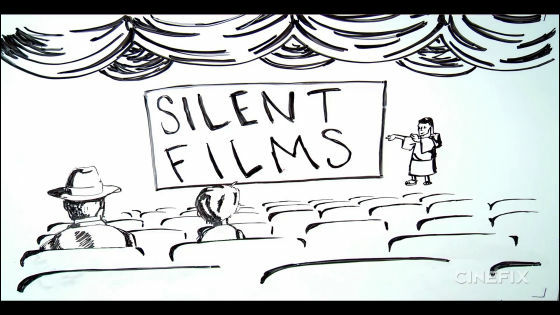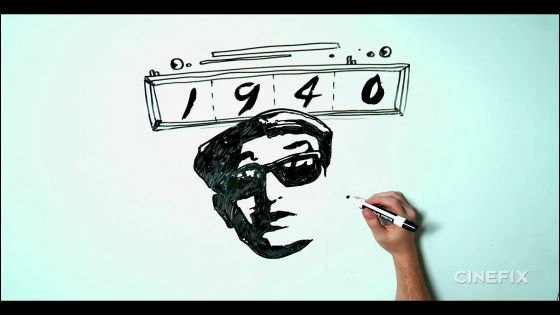A movie that clearly explains how the movie 'Star Wars' was influenced by Japanese period dramas

It is well known among some film fans that the
How are Samurai Films Responsible for Star Wars?!? - Film School'd - YouTube
The movie ' Star Wars Episode IV: A New Hope ' was released in 1977.

The story begins in Japan, 67 years before the release of Star Wars Episode IV.

Born in 1910, Akira Kurosawa often watched many American films as well as Japanese films accompanied by his father, Isamu, who was a physical education teacher.

Kurosawa also became interested in silent films, which were popular in Japan at the time.

At the time, when silent films were shown in movie theaters, there was almost always a man standing next to the screen.

The man standing next to the screen was a professional commentator known as

Fast forward to 1940.

Akira Kurosawa joined

It is said that the films that Akira Kurosawa made during the war contained propaganda content.

However, during the Pacific War, Japan accepted the Potsdam Declaration and surrendered in 1945.

After the war, Japan was occupied by the Allied Powers, including the United States.

After the war,

Among the expressions that

Meanwhile, American Hollywood was entering its Golden Age, when large-scale, high-quality films were being produced one after another by film companies that adopted the industrial structure known as

However, in 1948, a court ruling was passed against Paramount and other major film companies that allowed them to separate their theater chains from the film companies themselves, bringing the end of the studio system.

In addition to the prohibition of the studio system, the Hollywood industry was severely damaged by the widespread use of the suburban lifestyle in the United States, which led to fewer people going to movie theaters in cities.

Around this time, the occupation by GHQ in Japan had ended, and freedom of expression was recognized, allowing film directors to make films as they pleased.

Representative figures of the Japanese film industry at that time were

The two major genres in the Japanese film industry were modern dramas and period dramas.

The pronunciation of era is very similar to 'that word' that appears in Star Wars.

Akira Kurosawa's first postwar period drama,

Although Rashomon did not receive positive reviews in Japan, it won the Grand Prix at the Venice International Film Festival and received high praise overseas.

Rashomon's winning of the Grand Prix spread the reputation of Japanese films around the world.

Kenji Mizoguchi's '

Then, in 1958, Akira Kurosawa's '

Set in the Warring States period, The Hidden Fortress is reminiscent of the story of that iconic space opera film, in which two peasants rescue a princess fleeing the war and help her escape to an allied country.

Around the same time in America, George Lucas was passionate about car racing...

He is involved in a traffic accident and miraculously escapes death, but is forced to reexamine his life.

After reconsidering his life, George Lucas went to the University of Southern California to study film.

During his college years, George Lucas had a fateful encounter with

George Lucas fell in love at first sight with 'Seven Samurai' after being taken to see it by John Milius.

Since then, four directors have emerged who represent the era in American cinema:

Francis Ford Coppola filmed the worldwide hit '

Martin Scorsese cast

Steven Spielberg's

Then, George Lucas's 'Star Wars Episode IV: A New Hope' was released in 1977.

Star Wars Episode IV was apparently heavily influenced by Japanese period dramas and the works of Akira Kurosawa. For example, the 'Jedi' who appears in the film was named after the 'period' (era) in period dramas.

Darth Vader and ...

The Stormtrooper costumes are inspired by samurai armor.

Yoda is said to be modeled after Kanbei Shimada, a character from 'Seven Samurai.'

The scene in which Obi-Wan Kenobi cuts off an alien's arm in a bar at Mos Eisley spaceport is reminiscent of Akira Kurosawa's '

Switching scenes from right to left was a technique often used by Akira Kurosawa.

Taihei and Matashichi, who appear in The Hidden Fortress, are said to have been the models for C-3PO and R2-D2 from Star Wars.

There is a scene in Star Wars that is very similar to the one in 'Seven Samurai' where the enemy gradually appears from the top of the hill.

Looking at the influence and history of period films on Star Wars, it becomes clear that movies are not just entertainment, but a form of communication that transcends borders.

Related Posts:







